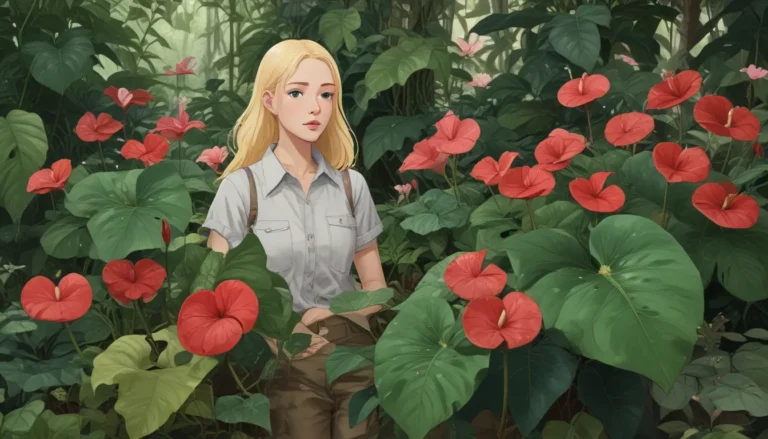Engage in Science and Transform Your Observations with Citizen Science Apps

Are you a curious observer with a keen eye for nature’s wonders? Do you enjoy keeping a close watch on the changing seasons, from the first bloom of spring flowers to the arrival of winter’s snow? If so, you have the opportunity to contribute to scientific research as a citizen scientist.
Around the world, scientists are harnessing the power of ordinary individuals to collect data on a wide range of environmental topics. By participating in citizen science projects, you can make a meaningful impact on scientific research while deepening your connection to the natural world.
In this comprehensive guide, we will explore five citizen science apps that allow you to transform your observations into valuable data for scientific endeavors. From birdwatching to cloud observation, these apps offer a diverse range of opportunities for participants of all ages and backgrounds.
Join the Citizen Science Movement with These Apps
Engaging in citizen science doesn’t have to be a daunting task. These citizen science apps provide accessible and enjoyable ways to contribute to scientific research, making it a fun and educational experience for the whole family. Whether you’re in a bustling city or a remote mountain setting, there’s a citizen science project waiting for you.
Here are the five citizen science apps that we will explore in detail:
- eBird
- Globe Observer
- iNaturalist
- Nature’s Notebook
- Zooniverse
Discover the Power of Citizen Science Apps
1. eBird
For bird enthusiasts of all levels, Cornell’s eBird app provides a platform to report bird sightings and contribute to avian research. By creating a free Cornell Lab account, you gain access to a wealth of bird-counting projects, educational resources, and identification courses.
With eBird, you can document your bird sightings in real-time while birdwatching or traveling, or submit checklists retrospectively. The app’s GPS tracker automatically records relevant details like time and location, making it easy to contribute data even in remote areas without cell service.
Your observations can help researchers study bird populations, inform conservation efforts, and guide environmentally-conscious practices. In your own garden, you can use your birdwatching knowledge to make informed decisions about plant selections and pest control strategies.
2. Globe Observer
Join NASA’s Globe Cloud Observation Project through the Globe Observer app and help scientists study Earth’s atmosphere. By comparing ground observations with satellite data, participants contribute valuable insights into cloud patterns and atmospheric processes.
The Globe Observer app offers educational resources and eTraining programs for both teachers and observers. By conducting cloud observations during specific satellite passes, you can contribute data that enhances our understanding of the Earth’s environment.
In addition to cloud observations, the Globe Observer platform offers projects in other areas of study, such as mosquitoes and land conservation. By participating in these projects, you contribute to scientific research supported by leading organizations.
3. iNaturalist
Experience the thrill of nature exploration with the iNaturalist app, a collaboration between the National Geographic Society and the California Academy of Sciences. Through the app or website, you can document plant and animal sightings and participate in crowdsourced projects.
Join a Bioblitz event or start your own project to contribute to a vast database of plant and animal species. By collaborating with other observers and identifiers, you help create a valuable resource for scientific research.
Whether you’re online or offline, you can upload your findings and engage in discussions with fellow nature enthusiasts. Your contributions to iNaturalist support biodiversity conservation and expand our knowledge of the natural world.
4. Nature’s Notebook
Explore the world of phenology with Nature’s Notebook, a project by the USA National Phenology Network and the United States Geological Survey. By observing the timing of plant and animal life cycle events, you can contribute to phenological research and environmental conservation efforts.
Through the Nature’s Notebook app or website, you can easily record your observations of plant and animal species. By participating in campaigns and projects, you join a community of like-minded individuals dedicated to understanding the impact of climate on ecosystems.
As a certified observer, you can monitor the phenophases of specific plant species and contribute valuable data to ongoing research projects. By applying phenological principles to your own garden, you can make informed decisions about planting and wildlife habitat management.
5. Zooniverse
Join a global community of volunteers on the Zooniverse platform and contribute to a wide range of scientific and humanities projects. By classifying data collected by citizen scientists, you help researchers transform raw information into actionable insights.
Engage in projects related to nature, wildlife, and environmental conservation, ranging from squirrel mapping to bird nesting studies. As a Zooniverse volunteer, you can participate in discussions with researchers, beta test new projects, and moderate project forums.
By participating in citizen science projects, you play a vital role in advancing scientific knowledge and promoting environmental stewardship. Through your contributions, you can make a meaningful difference in understanding our natural world and guiding sustainable practices.
Get Involved and Make a Difference
Citizen science apps provide a unique opportunity to engage with scientific research and contribute to important environmental initiatives. Whether you’re a seasoned naturalist or a curious beginner, there’s a citizen science project waiting for you to explore.
To discover more citizen science projects and get involved in meaningful research, explore platforms like SciStarter, which offers a diverse array of opportunities for citizen scientists.
As you embark on your citizen science journey, remember that your observations and contributions matter. By participating in citizen science projects, you become part of a global network of individuals dedicated to understanding and preserving our natural world.
Are you ready to join the citizen science community? Install your chosen app today, start submitting your observations, and connect with fellow participants to make a difference.
Have you participated in citizen science projects before? Share your experiences and tips in the comments below. Together, we can contribute to a brighter, more sustainable future for our planet.
If you’re interested in exploring more wildlife observation topics, check out these articles for inspiration:
- Ground and Wood Nesting Bees: Learn to Identify Common Backyard Species
- Bats Beat Bugs: Welcoming Bats into the Garden
- Guide to Backyard Birds and How to Attract Them to the Garden
Let’s continue to explore, learn, and contribute to the collective knowledge of our natural world through citizen science. Join the movement today and make a positive impact on our environment!
*





